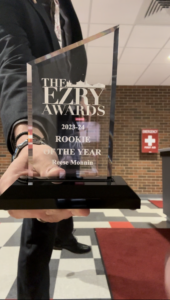State officials have a new beast to wrangle; a narcotic known as “krokodil” may have crawled its way up U.S. shores.
In early fall of this year, stories began to fly concerning a novel and extremely potent narcotic making its way to the U.S. from Russia. With its ingredients being available over the counter and preparation being relatively simple, its no wonder krokodil usage has taken an upward turn in Russia and Ukraine in recent years. The catch? Scaly, green, rotting lesions of skin at injection sites has made for a prime, albeit disturbing, Internet sensation. Infections caused by the destructive nature of the drug have been severe enough to necessitate skin graphs and even amputations, as it causes internal tissue damage that eats its way to the surface.
A derivative of morphine, krokodil is chemically known as desomorphine. As an opioid, desomorphine has powerful pain killing and sedative effects (stronger than morphine), and creates a drug experience akin to heroine. It is also highly addictive, and in tandem with infections caused by dirty needles or poor injection technique, emergency rooms in Utah, Arizona, Oklahoma, and Illinois so far have grown familiar with its nightmarish effects. In fact, two deaths from krokodil use have been reported in Oklahoma so far.
But the spread is hitting even closer to home. The Huffington Post reported on Nov. 1 that Columbus, Ohio had had its first encounter with the drug. Medics revealed that a homeless man presented to them had the characteristic reptilian skin lesions and admitted to using krokodil.
Speculation does exist, however, as to whether or not the drug being examined in these cases is actually krokodil. Newsweek reported that in Chicago, Drug Enforcement Administration officers hit the streets to find out if the man-eating drug was circulating, but only found heroine in lab testing. No states with the krokodil scare were able to offer conclusive evidence of the drug. Concern still remains over krokodil lurking in the U.S., however, considering that the DEA can only test what they find and what is submitted to them.
What has made this cocktail of codeine, pain thinner, and other household poisons such a top seller? Lila Zaharkov, PhD, associate professor of languages, explained, “In terms of historical perspectives, drugs were hardly available in Soviet times-now, more freedom brings more availability.” Soviet-era Russia had strict prohibition against drug production and trafficking, and Professor of Sociology Jerry Pankhurst, PhD stated, “Since the end of the strong controls of the communist period, drug abuse has been a terrific and growing problem, as well.”
He continued, “Overall, when post-Soviet capitalism did not prove to be full of riches for everyone…asocial or anti-social behaviors became especially prominent. As I understand the development of krokodil, it grew up in rural Siberia where options for heroine or other opiates were absent. This home-cooked drug, based on available codeine and other substances, became popular, and then a market developed that spread it to other areas.” Because krokodil seems to be most popular in these areas with limited access to other drugs, Newsweek stated it seems unlikely that the U.S. would have such a demand for the drug given the widespread availability and abuse of other opiates.
State officials will continue trying to hunt down krokodil in their murky but growing swamp of evidence.







